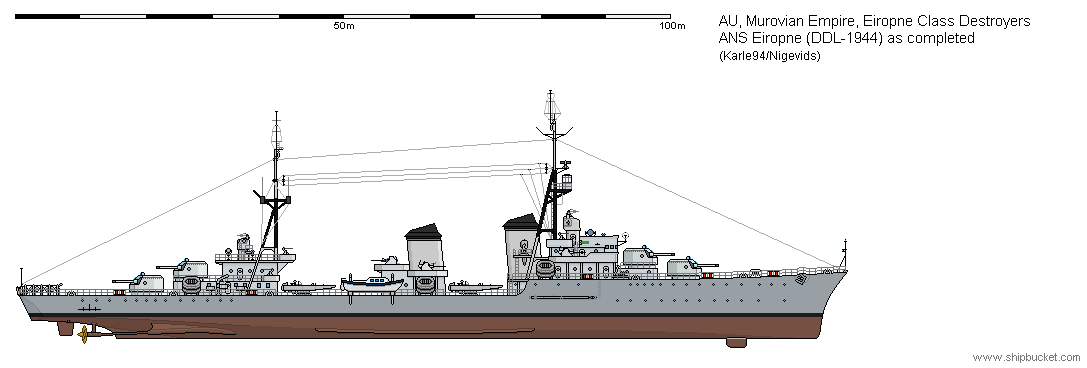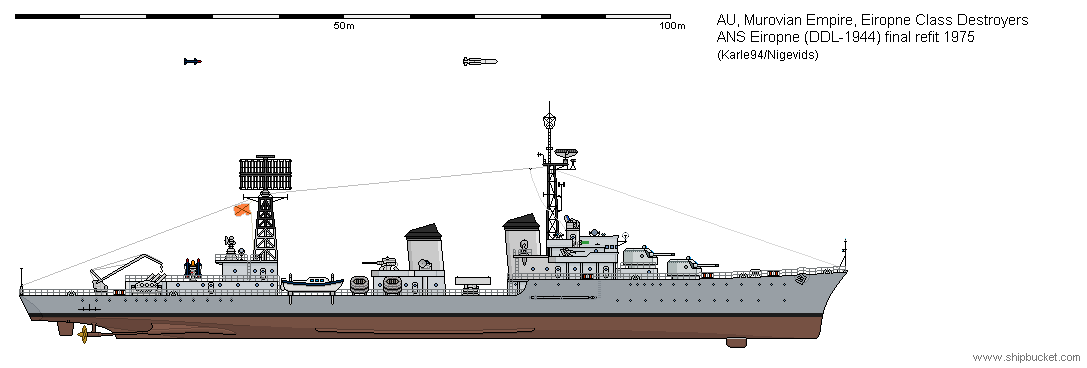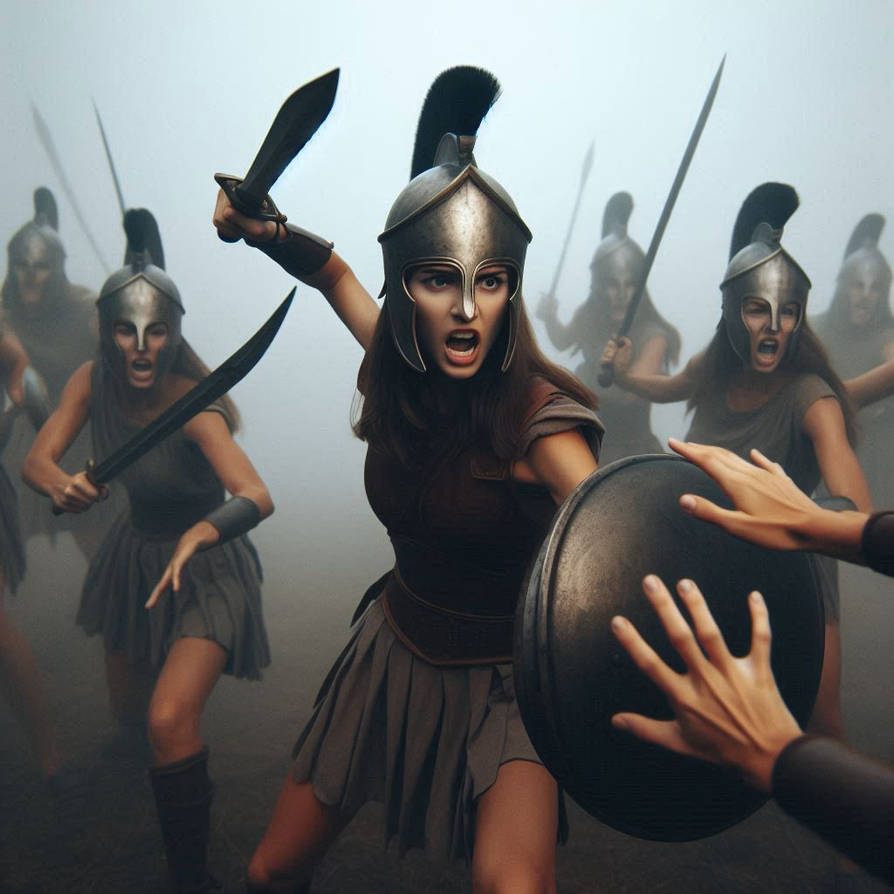With the loss of two of the earlier Otrera class leaders, a new class was designed to replace them. Six ships were laid down in 1942-43 with completion expected in 1944-45. Eventually construction slowed down and they were completed, one in 1944, three in 1945 and two in 1946. The twin 4" were the latest Mark available, in semi-automatic, before all manner of weaponry became fully automatic. To give some indication of the advances, the 4" on the Thalestris class (1926) fired at 10-12 rounds per minute, The Hylla class (1939) fired at 15-16 RPM, while the latest guns on Eiropne fired at 19-20 RPM (on a flat calm day with moderate temperatures). Being able to achieve those firing rates is not always a good thing. Most of the increase in size from the Otrera to the Eiropne was in ammunition stowage. Any battle that lasted more than a few minutes could find the Eiropne running short of ammunition.

While these were big ships for destroyers, at no stage during their 35 year career did the Navy consider converting them into missile armed ships. Two Supercat mountings of AA missiles were mounted in 1970. A twin 3" automatic mounting replaced the 40mm behind the funnel. the other 40mm twins were removed. The pair beside the bridge were replaced with the latest 40mm singles in 1954. The torpedoes were replaced with RATS mountings in 1950, which in turn were replaced with Harpoons in the 1970's. Radar was probably the most updated systems on the ships. Air search, surface search, and sub-surface units were replaced and updated on a regular basis. The original tripod masts needed to be removed and replaced with later lattice masts in the 1950's to be able to mount the bigger and heavier systems being fitted at the top of the masts.

By 1970 these ships were starting to show their age and a final round of refits were worked out for the class to give a few more years service. Four of the class went to the Falklands Islands as the classes last hurrah. The twin auto 3" proved very good at shooting down Exocets'. Mind you it only took one miss to leave you in trouble. It was the Eiropne that took an Exocet hit, but where the 'Aluminum' wonders burnt out, the sturdier Eiropne took the hit, put out the fires and left the Task Force to start the long trek back to Mu. On arrival the ship and crew were given a Heroes welcome, but once it was over the ship was paid off and sent to the breakers yard. The rest of the class had all joined it by 1985.
